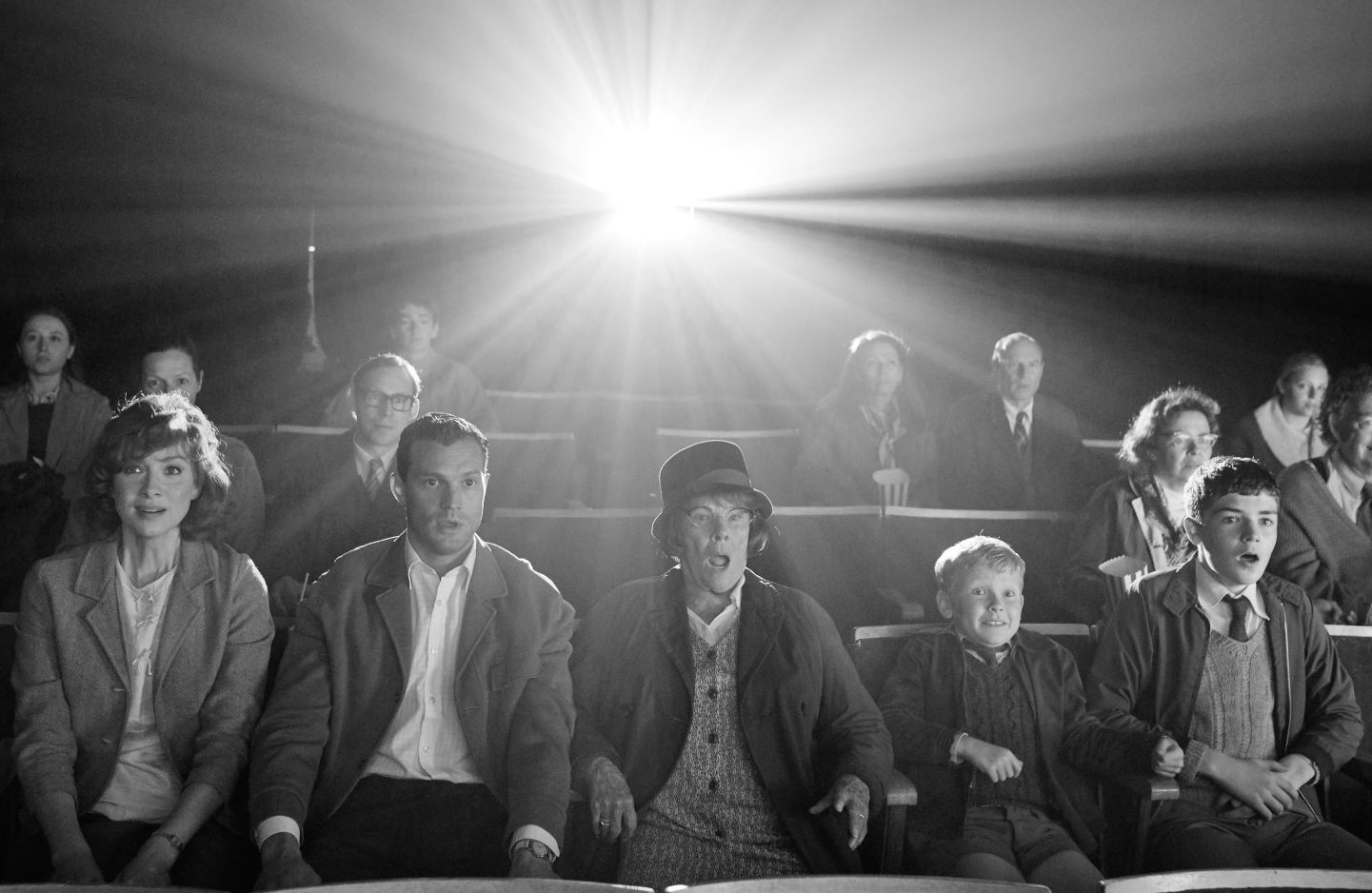
Kenneth Branagh’s Belfast, a tribute to his hometown, is a moving but detachable watch, writes Film Critic Anna Emmerson Robinson
Kenneth Branagh‘s latest film, Belfast, takes place on a street in 1969 and focuses on one family as they experience the beginnings of the Troubles in Northern Ireland and the division within their community that this time caused. I went to see this film with my mum, as Belfast is part of our family history. My dad is from Northern Ireland and lived through these times, but it is not something we often talk about. We felt, however, that it was important to see this film and see the perspective of the Troubles through the eyes of lead character Buddy (Jude Hill), a 9-year-old Protestant boy who is confused about what is happening around him, and why his family may need to leave.
Shot entirely in black and white, the film has a historic feel to it, and what I really enjoyed was the interesting camera angles and cutaway shots that pieced the film together. In between each scene, there are cutaways to different places around Belfast, such as the Titanic Quarter or long shots from the other side of the Lough. These shots helped situate us within the wider area of Belfast, as much of the film takes place on the street in which the family live and in Buddy’s grandparents’ house. The cinematographer, Haris Zambarloukos, has worked on all Branagh’s most recent films, and in this film experimented with low and high angle shots, extreme close-ups, and vast shots of the mountains that surround Belfast. This gave the film a more experimental, documentary feel as it was not the typical imagery of a Hollywood movie. The film is a semi-autobiographical telling of Branagh’s own childhood in Belfast before his family moved to Berkshire, and the school in the movie is the same one Branagh attended. Having read about Branagh’s life, there are similarities throughout the story to his own experiences.

During the film, there are moments of found footage from the news at the time, which added to the authentic feel of the film. The costuming and setting were well thought out, and while we could not see the colours, it still felt that we were in 1969. Many of the actors are from Northern Ireland, and their accents and acting added to the authenticity. However, Judi Dench, who played the grandmother, struggled with the Northern Irish accent, and this distracted me from the escapism of the cinema, as I was constantly reminded that she was acting. Whilst her acting was strong, her accent was not, and I felt this let down her performance. Some of the school children in the film were also very obviously English – in all of Northern Ireland, you would hope that actors could be found with the right accent. Jamie Dornan played the role of Pa, working away in England and struggling to keep his family safe from afar. His performance was very convincing, and I really felt for his character and the identity crisis he faces as he wrestles with the notion of moving his family away from their home. Ma (Catríona Balfe) and her determination to provide for her sons whilst also ensuring they grew up to be nice young men was reminiscent of my own Irish family members, and indeed of Branagh’s own mother- an ‘Irish mammy.’ The unnamed parental figures in the film meant they could be anyone’s – a universal mother and father- and ensured the focus remained largely on Buddy.
The music ensured even the moments of silence were Irish
One of the best parts of the film was the score, sound tracked largely by Van Morrison’s music. A Northern Irish musical icon, the music ensured even the moments of silence were Irish to an extent. Whilst it is set during the beginning of the Troubles, the focus is on the thoughts and feelings of Buddy and his family, and we see the effect the Troubles has on them, rather than on the whole city as other films or documentaries have shown. There are moments of violence and bombing which may be upsetting to some viewers, but these are infrequent, and for much of the plot, the real violence is far away – the street is protected in more ways than one. The film was, at times, very moving and there were tears from some audience members, as we sympathised with the fears of young Buddy experiencing real violence and vitriol for the first time.
Verdict:
Whilst the soundtrack and interesting filming techniques made the film a unique and personal movie, the false Irish accents of some of the cast meant that I kept being removed from the escapism of the cinema and the film, and thus I couldn’t full commit to the characters and their experiences. It is an important film in the history of Northern Ireland, but the casting of English actors meant it was not a fully Irish film, and thus I did not enjoy it as much as I wanted to. Having seen some of Branagh’s other films, this is not his best work, but is indeed his most personal and I appreciated that we gained some insight into his own childhood and the childhood of many other Northern Irish children like him.
Rating: 6/10
Belfast is out now in cinemas
Looking for more recent releases? Have a read of these Redbrick Film articles:
Comments